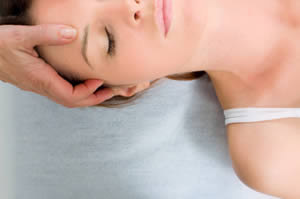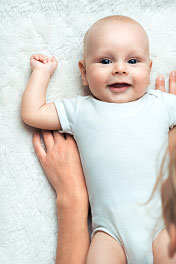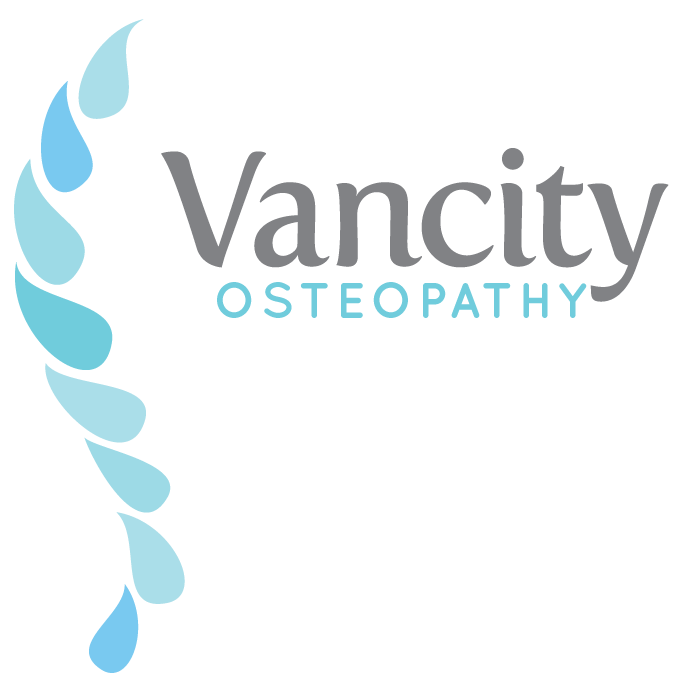Cranial Osteopathy
Cranial Osteopathy is the study of anatomy and physiology of the cranium and its inter-relationship with the body as a whole.  Dr. Sutherland, DO, discovered, developed and taught Cranial Osteopathy and never failed to emphasize that the cranial concept was only an extension of, not separate from, Dr. Still’s science of Osteopathy.
Dr. Sutherland, DO, discovered, developed and taught Cranial Osteopathy and never failed to emphasize that the cranial concept was only an extension of, not separate from, Dr. Still’s science of Osteopathy.
Dr. Sutherland found that not only is there a subtle movement of the cranial bones, but there is also movement of the nervous tissue, the brain itself and a fluctuating cerebral spinal fluid (CSF). Dr. Sutherland claims that this inherent motion is governed by laws not framed by human hands. This reiterated what Dr. Still endeavored to leave with us - that the CSF is the highest known element in the body. The CSF is seen as the fundamental expression of life being breathed in the body (Breathe of Life) and reflects the essence of health within the system.
Cranial Osteopathy may be applied for the prevention and treatment of disease and enhancement of health, within the practice of the science of Osteopathy and is ideal for babies, the elderly, pregnant women, acute and chronic reoccurring injuries.
Biodynamic Osteopathy
 As Osteopathy is an ever-evolving science, and as new information becomes available about physiology, embryology and the natural laws, they add credibility to the incredible insight of the forefathers of Osteopathy. The work of our forefathers continued to be studied by many Osteopathic Practitioners world wide.
As Osteopathy is an ever-evolving science, and as new information becomes available about physiology, embryology and the natural laws, they add credibility to the incredible insight of the forefathers of Osteopathy. The work of our forefathers continued to be studied by many Osteopathic Practitioners world wide.
One such group from New England used their perceptual skills to focus on the natural laws and the kinetics of motion. These practitioners came to realize that the pattern of motions felt in treatments were similar to the motions of embryogenesis (development and formation of an embryo).
Dr. James Jealous reviewed the work of Dr. Sutherland and fluid motion in relation to the work of a German embryologist, Dr. Erich Blechschmidt. Whilst Dr. Blechschmidt was describing the different ways in which fluids interact with each other inside the body, and referred to the forces at work as biodynamic, Sutherland perceived these same forces in the fluids in treatments. Yet the two had never met nor read each other’s work. Dr. Jealous had the insight to put the two ideas together. He observed that the forces of embryogenesis did not stop at birth, but were maintained throughout childhood, governing growth and development and continued throughout our lives as the forces that heal and sustain health. He coined the term The Biodynamics of Osteopathy in the Cranial Field, uniting the work of two men a world apart. Biodynamic Osteopathy is a philosophy and treatment modality which continues to build on the life work and experiences of Dr. Sutherland and his protégés.
How does it work?
 The forces which guide embryogenesis are the same forces that guide growth and development in children, and later as adults, that become the restorative forces to heal and sustain health. The rhythms that Osteopathic Practitioners feel for, are all expressions of this primal force, which Dr. Sutherland called "Primary Respiration" - the breathing or rhythmic movement of the body present in utero before we can take an actual lung breath.
The forces which guide embryogenesis are the same forces that guide growth and development in children, and later as adults, that become the restorative forces to heal and sustain health. The rhythms that Osteopathic Practitioners feel for, are all expressions of this primal force, which Dr. Sutherland called "Primary Respiration" - the breathing or rhythmic movement of the body present in utero before we can take an actual lung breath.
Primary respiration is the rhythm of life that underlies all movement in the body. By synchronizing and observing the expression of the primary respiration in the patient's body, the Osteopathic Practitioner observes the innate healing potential of the patient, which allows within them the restoration of health and homeostasis. In doing so, tissues adjust, reorient and breathe; blockages and traumatic imprints easily dissolve; and fluids are free to rebalance, allowing transformation and transmutation to occur throughout the whole of the patient. As A.T. Still says: the return of normalcy. It is perhaps one of the gentlest treatments you may encounter and although very gentle, it is extremely powerful and results are profound.
Osteopathy & Pediatrics
Osteopathy for Babies
There is no better osteopathic teacher than the child.
 It is a common belief that children and babies should have no structural stresses and strains in their body, due to their young age, flexibility and the obvious fact that they are much less likely to incur the injuries and strains of an adult. The reality, however, is very different.
It is a common belief that children and babies should have no structural stresses and strains in their body, due to their young age, flexibility and the obvious fact that they are much less likely to incur the injuries and strains of an adult. The reality, however, is very different.
The whole birth process is one of the most stressful experiences. The baby is subjected to enormous forces as the uterus contracts to expel the baby against the natural resistance of the birth canal. The baby’s head has the ability to adapt and change shape to the forces exerted against it in response to labour. The soft bones of the skull overlap and mould as the contractile forces of the uterus squeeze the baby down, and out of, the birth canal. The distortions in the head as a result of labour, are usually released naturally with feeding and crying. However, in some cases, the distortions remain and may possibly affect growth and development.
There are many reasons behind the classification of a difficult, and stressful birth, for both mother and baby. As a result, the baby may be unable to fully resolve the effects of birth. Such difficulties may present as abnormal fetal positioning during pregnancy,(breech or posterior), long, lengthy labors, very quick labors, ventouse or forceps deliveries, breech and face presentations, premature deliveries, cord-around-the-neck and Caesarian deliveries.
If these patterns remain unresolved, the baby has to adapt and accommodate these stresses and strains as they grow. This may result in the baby being physically uncomfortable and unhappy, or to develop in an asymmetrical way throughout the whole of the body. These babies may present with crying and irritability, feeding difficulties or difficulty latching, colic, spitting up and regurgitation, thumb sucking, sleep disturbances, head scratching and banging, abnormal head shape (Plagiocephaly), and difficulty with teething.
Unresolved birth stresses, and the body’s compensations to them, are at the root cause of many different problems in both childhood, and well into adulthood. These stresses can usually be treated very quickly after birth, but become progressively more difficult to eliminate the longer they are present.
Osteopathy for Children
As children grow, they generally grow out of most of the crying, fussiness, difficulty sleeping and feeding etc., that they may have experienced as young babies. However, if the retained strain patterns and moulding are not treated, they may being to suffer from secondary effects as they continue to grow and develop. This may make it difficult to sit still and focus, and may result in poor concentration affecting behavior and learning.
Osteopathy may be helpful with those children suffering from:
- ADHA (Attention Deficit Hyperactivity Disorder)
- Asthma
- Autism
- Bed wetting
- Behavioral problems and hyperactivity
- Chest infections
- Clumsiness
- Delayed growth
- Difficulties with fine and gross motor skills
- Ear infections (Otitis Media)
- Growing pains
- Headaches and Migraines
- Learning difficulties
- Scoliosis
- Sinus problems and mouth breathers
- Post-concussion syndrome
 Many people are surprised to learn that Osteopathy can be used to treat infections of all kinds. The majority of children present with ear infections (Otitis Media), and chest infections.
When strain patterns are released and rebalanced throughout the cranium and body, the lymphatic system is able to respond more efficiently and its system of tiny channels that return excess fluid from the periphery of the body back to the venous system, is free to work. It is within this system that lies much of the immune response. When there is efficiency and freedom of the lymphatics, healthy blood and nerve flow to, and from an area, is established, and thus the healing process can begin.
Many people are surprised to learn that Osteopathy can be used to treat infections of all kinds. The majority of children present with ear infections (Otitis Media), and chest infections.
When strain patterns are released and rebalanced throughout the cranium and body, the lymphatic system is able to respond more efficiently and its system of tiny channels that return excess fluid from the periphery of the body back to the venous system, is free to work. It is within this system that lies much of the immune response. When there is efficiency and freedom of the lymphatics, healthy blood and nerve flow to, and from an area, is established, and thus the healing process can begin.
Regular Osteopathic treatment can help realign the body after falls and sporting injuries and resolving these strain patterns in a child can further prevent problems developing later on, or even into adulthood. Children do not need treatment for every minor bump and bruise, but occasionally a child has a particularly serious fall whereby they are stunned or shocked. With falls such as these, parents may notice a change in the child's behavior, a change in sleep patterns, or the child may succumb to an infective illness. It is recommended to to have the child checked over after such events, to help them fully release the effects of the incident which has not resolved itself.
Osteopathy works with the body’s innate capacity to heal itself and establish overall health and wellbeing. In children this response is very strong and often results in a quick recovery with Osteopathic treatment.
Osteopathy & Pregnancy
Although it is a natural process, each pregnancy is very unique with a multitude of physical, hormonal, chemical and emotional changes. A mother’s body undergoes enormous changes during the whole process and there are many more changes occurring than the visibly protruding abdomen. The mother has to gradually adapt to an extra weight of baby, fluid and placenta during the pregnancy. As the body is adapting to carrying this extra weight, it may impose some physical strain on all the organs and tissues throughout the body.
As the baby grows inside the uterus, the mother’s body has to provide additional space, thereby requiring an adaptation of her posture. This causes changes in the body’s centre of gravity and shape of the spine. These changes may result in headaches, back pain, neck pain, sciatica, sacro-iliac dysfunction, pubic symphysis dysfunction, digestive discomforts, nausea and breathlessness.

Each pregnancy is unique and dependent on an individual’s case history. Previous pregnancies and injuries may have an affect on the mechanical adaptations of the spine and pelvis, whilst illnesses may have a relevance on the state and quality of tissues. These factors, along with the natural laxity of the ligaments in preparation for birth, give rise to the increased probability of aches, pains and fatigue. As the final stages of pregnancy approach, there is a natural reduction in the amount of space for the baby to move around, optimizing fetal positioning for delivery. Therefore, any past injuries to the pelvis, sacrum and coccyx may distort the birth canal, making the descent of the baby more challenging.
An Osteopathic approach to treatment is very safe for both mother and baby. A detailed case history is taken prior to examination and treatment. And along with the knowledge of the contraindications coexisting with certain techniques - the treatment of pregnant mothers is always gentle and the comfort of the mother and safety of the baby are always assured.
The goal of an Osteopathic treatment during pregnancy is to support the whole body, enabling it to accommodate to the changes taking place. Osteopathy maybe beneficial before, during and after pregnancy, in several ways:
- • Preparing for pregnancy
- • Easing the discomforts during postural adaptations of pregnancy
- • Helping with the emotional component of pregnancy
- • Preparing for the demands of labour
- • Reducing the risks of complications
- • Helping to recover from both the pregnancy and the delivery.
Is Osteopathic treatment required after delivery?
Osteopathic Practitioners recommend that all mothers have a post-natal Osteopathic treatment following delivery. Making sure that the body is well aligned and rebalancing the pelvis after childbirth, is simple and straightforward when treated within the first few weeks, and may help to prevent further problems in the pelvis, pelvic organs and spine.
Additionally, balancing the meninges (nervous tissue) - ensuring freedom in movement particularly of the spinal-dural membranes if an epidural was administered, is significantly important. Treatment can also be beneficial with back pain caused by breastfeeding and is also helpful in treating mastitis and helping speed up recovery from a Caesarian.
Osteopathy & Dental
Dentists and Osteopathic Practitioners having been working together on problems involving the mouth, teeth, jaw and face, since the Cranial Concept was first taught by Dr. Sutherland, in the early part of the last century. Dental work can have a profound effect, not only on the teeth but also on the integrity of the jaw, face, head and neck. Conditions affecting anyone of these structures can have a direct effect on the rest of the body.
 The face is made up of a several bones. Some of these bones are considerably delicate, and are intricately linked together in a very complex manner. Cranial Osteopathy understands that the bones of the face, like the rest of the skull, are free to move minutely, which they do so in a rhythmical fashion. This movement is important in maintaining drainage of the sinuses, and permitting the free passage of air through the nose.
The face is made up of a several bones. Some of these bones are considerably delicate, and are intricately linked together in a very complex manner. Cranial Osteopathy understands that the bones of the face, like the rest of the skull, are free to move minutely, which they do so in a rhythmical fashion. This movement is important in maintaining drainage of the sinuses, and permitting the free passage of air through the nose.
Trauma to the face may restrict the normal movement between the bones, and can have very wide reaching effects in the whole body. One of the most common cause of trauma is dental treatment. This is not due to poor dentistry or the lack of dental skill, but rather the considerable forces exerted on a very small surface area.
The tempomandibular joint (jaw joint) is affected directly. The mouth is not designed to be held open in any one position for an extensive amount of time. The tension of the muscles of the jaw can remain unevenly distributed eventually affecting the alignment of our bite. Additionally, the positioning of our head and neck may cause some neck tensions or spasming. And, if any one part of the body is restricted in movement, it will naturally attempt to compensate which may result in mis-alignment elsewhere in the body.
Interestingly enough, during embryonic development the teeth partially originate from the ectomesenchyme, which is same origin as the skin, senses organs, nervous system and brain. Although, teeth go through the process of ossification, they did at one point did share the same origin as our senses organ, our proprioception, and our nervous system.
Therefore, the key to the integration of the concepts of both professions is the respect for this inherent motion in the human body, (which Dr. Sutherland coined the Primary Respiratory Mechanism), including the structures of the head (bones, nervous tissue membranes, fluid, and central nervous system).
Some of the most common dental related complaints, in which treatment maybe beneficial, include:
- • Bruxism (teeth grinding)
- • Dental pain
- • Jaw clenching
- • Orthodontic problems
- • Symptoms from traumatic extraction
- • TMJ (jaw) problems
